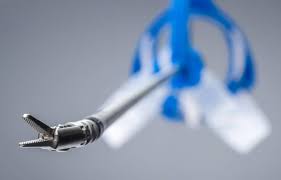Robotic surgical systems have made great strides in recent years and have become permanent fixtures in the workings of advanced surgical facilities. They are used in procedures such as minimally invasive, laparoscopic or exploratory surgery. However, since the required investments of money and time make it unfeasible to perform all interventions using surgical robots, a suitable balance must be found. The Máxima Medical Centre (MMC) plays a leading role in laparoscopic surgery in the Netherlands. In mid-2018, the hospital brought a new innovation into service: a robotic surgical arm called FlexDex.

“We’ve had positive reactions from the MMC with regard to FlexDex,” continues Prins. FlexDex has a control mechanism that is intuitive, gives tactile feedback, is quickly mastered and is disposable. It not only makes performing surgery less taxing by reducing shoulder movements, but it also allows surgeons to operate in difficult-to-reach places within the body. And because the instruments can move with greater precision, less damage is done to surrounding tissues. The tinier the wound, the faster the patient’s recovery and the smaller the chance of complications.
FlexDex also saves money. The acquisition and maintenance expenses are but a fraction of the costs of other surgery robots with similar functionalities. “Up to €4000 per intervention can be saved in comparison to other robots.” That is because FlexDex system has no docking time and can be used in every operating theatre; the use of the robotic arm also does not require a large team of doctors and nurses who have undergone weeks of training. All this enables hospitals to substantially ease the financial pressures of robotic interventions.

The only instrument currently delivered with FlexDex is the ‘needle master’. In future, the robotic arm will be developed further, enhanced with new instruments and validated in clinical trials. “We hope FlexDex will help us disrupt the paradigm under which surgeons had to choose between high cost–high function and low cost–low function,” Prins concludes.

